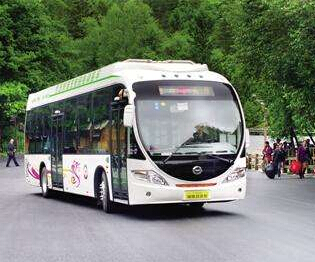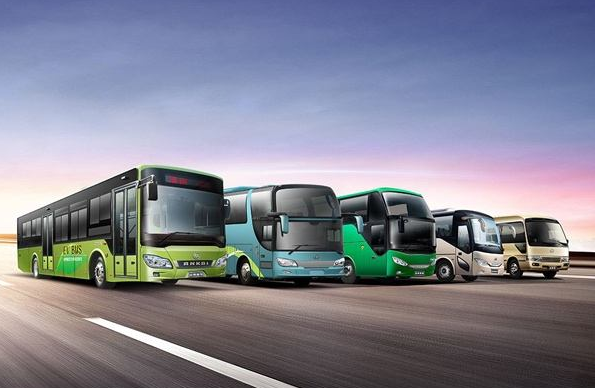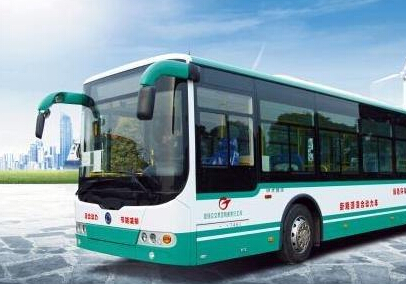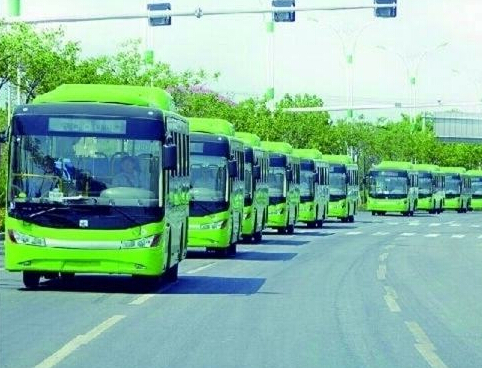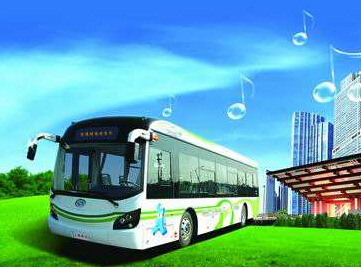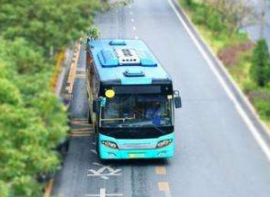China's bus industry has experienced a period of rapid growth. At this stage, the market is close to saturation, and annual sales growth has begun to decline. According to the "2018-2022 China Bus Industry Competition Pattern and Analysis of Major Competitors" released by the New World Industrial Research Center, in June 2018, the sales volume of passenger cars in China was 42,700 units, down 13.59% year-on-year. Among them, the sales volume of large passenger cars was 0.7 million, down 20% year-on-year; the sales volume of medium-sized passenger cars was 0.48 million, down 49.63% year-on-year; the sales volume of light passenger cars was 30,900, down 8.6% year-on-year.
The Chinese market is near saturation, and bus manufacturers are turning their attention to overseas. Taking Yutong Bus as an example, in 2017, Yutong Bus's overseas sales revenue reached 4.223 billion yuan, accounting for 12.71% of its total revenue. Not only Yutong Bus, Jinlong, Zhongtong, Ankai and other brand buses are actively exploring overseas markets, and overseas revenues account for an increasing proportion of total revenues of all enterprises.
The production method of passenger cars is quite different from that of other cars. The same type of car has a large production volume, and it will often produce hundreds of thousands of units. It can be produced by assembly line and has high production efficiency. There are many varieties of passenger cars, and a model can produce up to several thousand vehicles. It is difficult to form a scale production method. The production process requires more skilled and skilled workers, and the production efficiency is low. Compared with the developed markets, China's labor costs are lower and have a price advantage. Compared with the underdeveloped markets, China's production technology is relatively mature and has a quality advantage. Therefore, China's passenger cars are more competitive in the international market.

However, in May 2018, the export volume of Chinese brand passenger cars was 5,897 units, which was 3.58% lower than the 6201 units in the same period of 2016. One of the important reasons for the decline in overseas markets is that some European countries have begun to implement new energy bus plans. In London, for example, London will ban non-new energy passenger car sales from 2025. The market will temporarily suspend and replace bus plans, waiting for a one-step replacement of new energy buses.
Both domestic and foreign markets are declining, prompting the Chinese bus industry to begin to change its marketing approach. On the one hand, accelerating localized channel operations in overseas markets and strengthening the competitiveness of overseas markets; on the other hand, in the domestic and international markets, bus manufacturers participate in the local government's public travel procurement bidding work, and production meets local development needs. Bus types, such as new energy buses such as natural gas buses and electric buses. Transforming the existing sales model will open a new development path for China's bus industry.
New thinkers in the industry said that the technology level of China's bus industry has been advanced to the present stage, and the competitiveness of the international market is also strong. However, the supply and demand in the domestic market is close to saturation. With the adjustment of the energy structure in overseas markets, the demand for fuel vehicles has also begun to decline. In the future, China's bus industry wants to continue to maintain its existing competitiveness and market share. It must develop new energy buses and transform existing marketing methods to achieve long-term sustainable development.
















 RCCN WeChat QrCode
RCCN WeChat QrCode Mobile WebSite
Mobile WebSite